When Freedom Came: Remembering the Origins of Juneteenth
As we come into the season for exploring and celebrating Americanism, it's important to remember that the promises of freedom have ebbed and flowed to different groups in different ways. No other group in the United States has a more delicate relationship with freedom than African Americans. In 2021, Juneteenth was recognized as a federal holiday — an event with long-standing roots in Texas Black history with important connections for modern celebrations.
When did slavery in the United States come to an end? Generally, most people believe that the January 1, 1863 Emancipation Proclamation by Abraham Lincoln freed all enslaved Africans and African Americans in the country at one time. In reality, freedom came slowly over time for most people. The Emancipation Proclamation, a wartime measure, explicitly freed men, women and children in Confederate-occupied territories — places that were taken over by the Union earlier in the war, like New Orleans, Louisiana, were not considered free places. Of course, enforcement of the condition of slavery was lacking in these spaces, and thousands of self-emancipating people flocked to Union camps and occupied cities, knowing that their chance at freedom was better with President Lincoln's Army.
Despite the declaration of emancipation in the Confederacy, freedom was dependent on the word getting out from Union soldiers directly. In a world before cellphones, email and the internet, a vulnerable population like enslaved people, who were not allowed to read and write in most places, would be dependent on their enslavers to share news of events. Groups on the far edges of the confederacy who still needed to exploit the labor of their enslaved workforce often kept people in bondage well beyond Lincoln's announcement. In these cases, it wasn't until Union troops arrived in the area that the end of slavery was not only acknowledged but made a physical fact within these communities.
Juneteenth recognizes June 19, 1865, when Army Major. General Gordon Granger marched his troops into Galveston, Texas, and read out loud for all to hear that freedom for all was now the law — over two years after the Emancipation Proclamation was announced, two months after the end of the Civil War and four months after the ratification of the 13th Amendment.

Joint Resolution of the United States Congress, Proposing the 13th Amendment to Abolish Slavery, 1865 / THF118475
The first Juneteenth in Galveston was celebrated June 19, 1866 with particular traditions that have survived today. These few key elements included: food items that are red in color, reflections on the resilience of enslaved people, a celebration of freedom, and uplifting of Black economic and community power. Red symbolizes the blood of Africans and their descendants in America, shed through the international and domestic slavery trade. This color is reflected in foods eaten at these celebrations, like red velvet cake, smoked barbecue, watermelon and some kind of red drink that could be something floral like hibiscus, a native African flower used to make an iced tea, or something more sugary sweet.
Author and chef Nicole A. Taylor published Watermelon & Red Birds: A Cookbook for Juneteenth and Black Celebrations in 2022, the first of many cookbooks to explore Juneteenth published by major presses. Taylor explores the essential food history of Juneteenth and gives us some new spins on these wonderful delicacies.

Watermelon & Red Birds: A Cookbook for Juneteenth and Black Celebrations
Today, Juneteenth celebrations occur all over the country, providing an excellent opportunity to explore the uniqueness of Black American culture, taste amazing delicacies and reflect on our collective future with an eye toward freedom and liberty for all.
Amber N. Mitchell is curator of Black history at The Henry Ford.
Join us in celebrating Juneteenth with an emancipation picnic at the Mattox Family home in Greenfield Village.
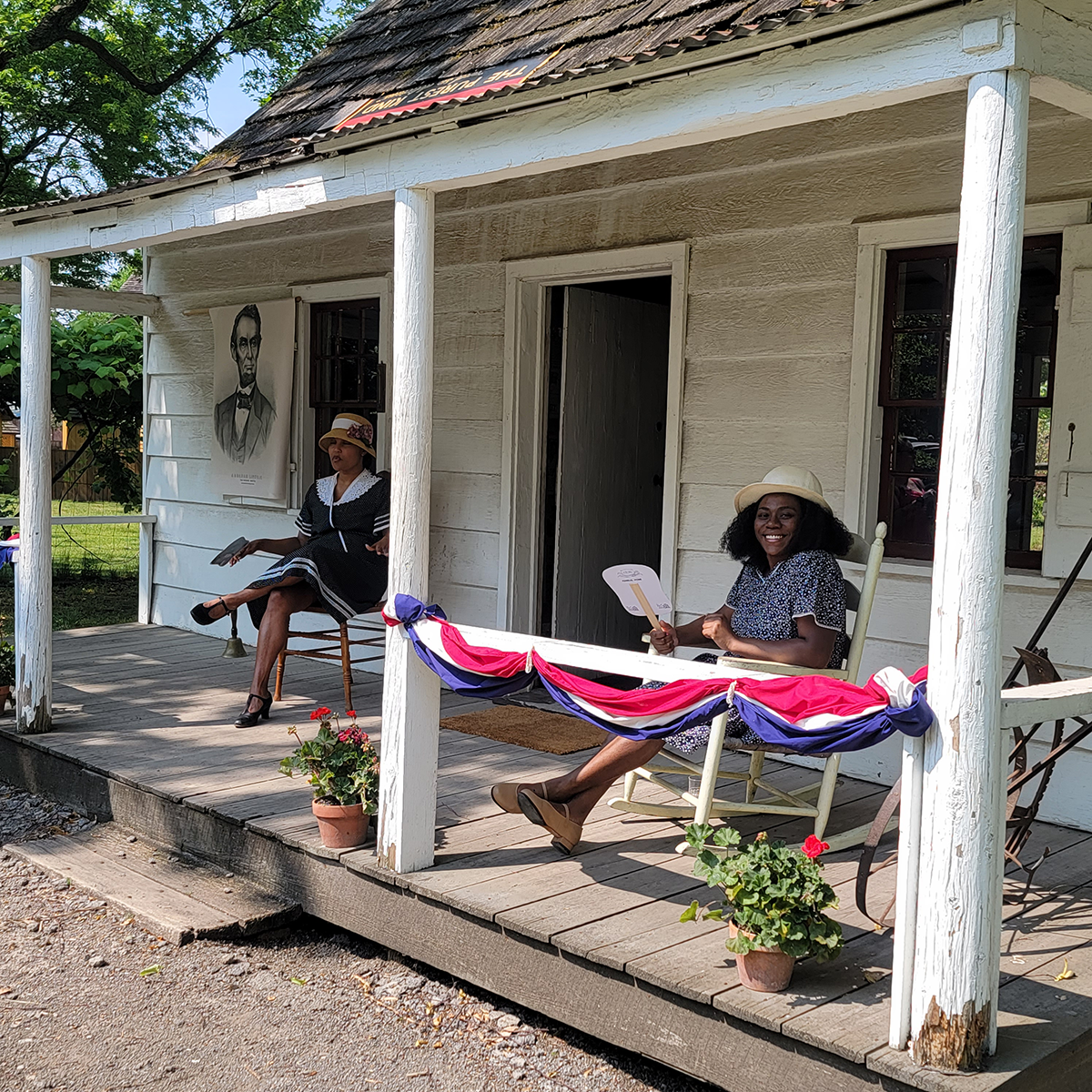
Photo courtesy of the Greenfield Village Living History team
Juneteenth is the nationally recognized holiday celebrating the end of American chattel slavery and commemorating the day enslaved people in Galveston, Texas, were finally freed on June 19, 1865. On September 22, 1862, President Abraham Lincoln issued the Emancipation Proclamation, announcing his intention to free enslaved people held in Confederate states. When the proclamation went into effect on New Year’s Day 1863, his signature alone was not enough to free them all. The Union Army could only enforce the Emancipation Proclamation where it had taken control of Confederate territory, leaving the Confederate South emancipated in a patchwork of liberation across the states. Emancipation for the enslaved people of Galveston came nearly two and a half years after the Emancipation Proclamation was signed.
Continue ReadingRemembering Parnelli Jones (1933-2024)

Parnelli Jones signing autographs at Indianapolis Motor Speedway, 1967. / THF144849
Auto racing lost a legend, and The Henry Ford lost a friend, when Parnelli Jones passed away on June 4, 2024. Rufus Parnell Jones (an aunt gave him his lifelong nickname, “Parnelli”) was born August 12, 1933, in Texarkana, Texas. His family moved to the Los Angeles area when he was young, and he grew up immersed in the racing and rodding culture of Southern California. Jones was building his own hot rods by age 17 and racing on local and regional tracks soon thereafter.
Early on, Jones distinguished himself with a brash, aggressive style behind the wheel. This, and a Midwest sprint car title Jones clinched in 1960, caught the attention of promoter J.C. Agajanian who gave Parnelli his ticket to the big time. Jones made his Indianapolis 500 debut in 1961, finishing in a respectable 12th place. The following year, he set a qualifying-speed record of 150.370 miles per hour. One year after that, in 1963, Jones won the race.

Parnelli Jones and his teammates at Indianapolis Motor Speedway in 1963. J.C. Agajanian is in the suit and cowboy hat. / THF114555
Parnelli Jones’s Indy win was not without controversy. It came during a time of rapid change at the Indianapolis as 1963 brought the first appearance of the rear-engine Lotus-Ford cars and ace Scottish driver Jim Clark. For much of the race, Jones, who’d won the pole position with the fastest qualifying time, battled with Clark and Dan Gurney, who also piloted a rear-engine Lotus-Ford. Clark and Gurney were quicker through the turns with their lithe Formula One-inspired cars, but Jones’s traditional front-engine roadster had the advantage on the straights with its higher top speed. Gurney’s car eventually succumbed to tire troubles, but Jones and Clark kept charging.
It was somewhere around lap 80 when officials first saw smoke intermittently wafting from Jones’s Offenhauser-powered Watson. The problem — a crack in the oil tank at the car’s rear — grew worse as the race continued. One hundred laps later, Jones’s car wasn’t just smoking, but purportedly leaving oil on the track. Per Indy’s rules, an oil leak called for Jones’s car to be black flagged — forced to the pits and effectively disqualified. J.C. Agajanian, owner of Jones’s car, pleaded his case to officials, claiming that the leak was easing as the oil fell below the level of the crack. Colin Chapman, campaigning Jim Clark’s car, argued for Jones to get the black flag.
After spirited debate, officials chose not to disqualify Jones. Instead of a black flag, Parnelli Jones took the checkered, with Jim Clark finishing second. Race fans still argue over how much of a factor that oil leak was and whether the black flag should have been used. But hypotheticals don’t mean much in the record books. Parnelli Jones earned his 1963 victory after leading 167 of 200 laps and maintaining an average race speed of 143.137 miles per hour — impressive numbers worthy of a winner.

Parnelli Jones in his turbine-powered car, built by Andy Granatelli, at Indy in 1967. / THF96164
Jones very nearly won at Indy again in 1967, behind the wheel of an unusual turbine-powered four-wheel-drive car, but a failed transmission bearing took him out as he led the pack just four laps from victory. Jones did win the Indianapolis 500 again as an owner. He partnered with Vel Miletich to form Vel’s Parnelli Jones Racing, and the team earned back-to-back victories with driver Al Unser in 1970 and 1971. VPJ Racing’s “Johnny Lighting” cars are still loved by fans for their striking blue-and-yellow lightning-stripe livery.

Parnelli Jones and Bobby Unser at Pikes Peak in 1964. Jones took first in the stock car division that year, while Unser topped the sports car division. / THF262097
Parnelli Jones’s triumphs went beyond Indianapolis. Like other greats of his era, he raced everywhere — from dirt tracks to Pikes Peak and from NASCAR ovals to Trans-Am circuits. By the 1970s, Jones had largely retired from open-wheel, open-cockpit racing, but he found further success in off-road Baja races. Jones partnered with co-driver Bill Stroppe to win Mexico’s Baja 1000 in 1971 and 1972, and the Baja 500 and the Mint 400 in 1973. Jones and Stroppe ran the races in a modified Ford Bronco sponsored by Olympia Beer — source of the Bronco’s memorable nickname, “Big Oly.” When he wasn’t racing, Jones kept busy selling automotive parts and tires through his retail businesses.
In 2008, Parnelli Jones was kind enough to sit for an interview with The Henry Ford for our “Visionaries on Innovation” series. We asked Jones how he hoped to be remembered — a standard question in many of these interviews. Naturally, he wanted to be thought of as a great driver, one who could win in almost any form of auto racing. (Jones needn’t have worried about that. It’s exactly how he’s being remembered now.) But it speaks to something deeper in his character that, first and foremost, he wanted to be remembered as a good, honest person. It’s an epitaph any of us would be proud to have, and one that certainly fits Parnelli Jones. The racing world will miss him.

Parnelli Jones in 2008. / THF56305
Matt Anderson is curator of transportation at The Henry Ford.
The history of LGBTQ+ activism in the United States is long. For the past century, the struggle for equality has taken many forms and faced many challenges, as the LGBTQ+ community have fought for their rights and their lives.
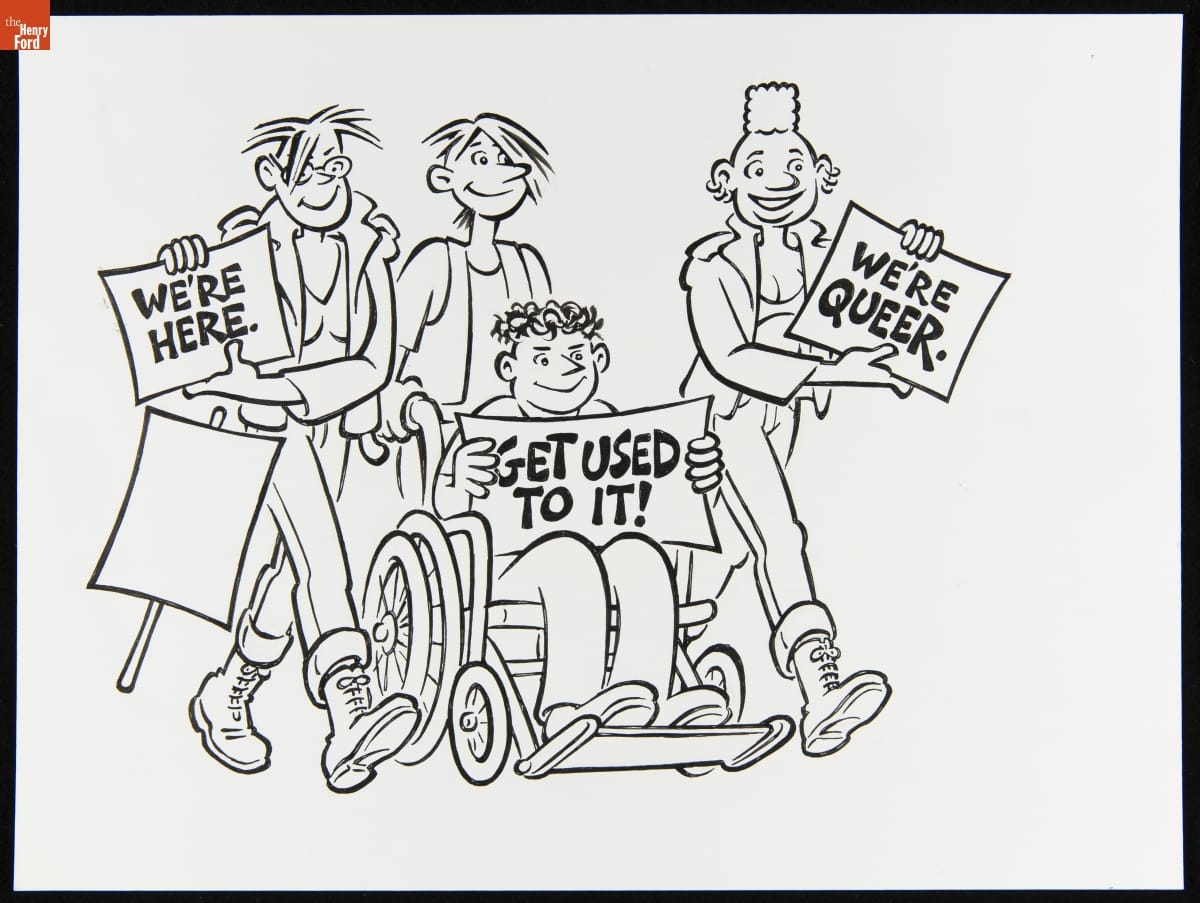
Illustration, "We're Here. We're Queer. Get Used to It!," circa 1995 / THF627364
Inspired by the developing gay community he encountered while working in Weimar Berlin, in 1924 German immigrant Henry Gerber legally incorporated the first homosexual organization in the United States — the Society for Human Rights. Black clergyman John Graves served as the organization’s first president. The society would exist for only a year before being forced to collapse due to lack of membership and legal prosecution, but during its short tenure, it published two editions of its “homophile” (an early activist term for “homosexual”) newsletter, Friendship and Freedom.
Continue ReadingWhat We Wore: Say Yes to the PROM Dress

The current What We Wore exhibit in Henry Ford Museum of American Innovation presents a variety of prom dresses dating from 1960 to 2006 — and uncovers the stories they tell about this important rite of passage.
Proms are a much-anticipated milestone for many teenagers. High school students dress up in their most glamorous formal clothing to enjoy the much-anticipated event — an occasion guaranteed to create special memories.
For teen girls, especially, choosing the perfect dress is key to the experience! Weeks before the big event, what to wear becomes the hot topic of conversation at school and with friends. Traditionally, young women wear evening gowns — the hunt may involve a trip to local stores, searching online retailers, or even having a dress custom made. For young men, it’s simpler — they usually rent a tuxedo.
Continue ReadingDishing on Diners
The world’s expert on diners shares his start, describes his discoveries and explains his connection to The Henry Ford.
By Richard J.S. Gutman
My half-century immersion in the world of diners began with poached eggs on toast in the middle of the night at Bud’s Diner, hard by the railroad tracks, in Ithaca, New York. It was 1970, and I was on a break with classmates from an all-nighter at Cornell University’s School of Architecture. Seeking sustenance, I substituted a swiveling stool at the counter for an equally uncomfortable drafting stool up on the Arts Quad.
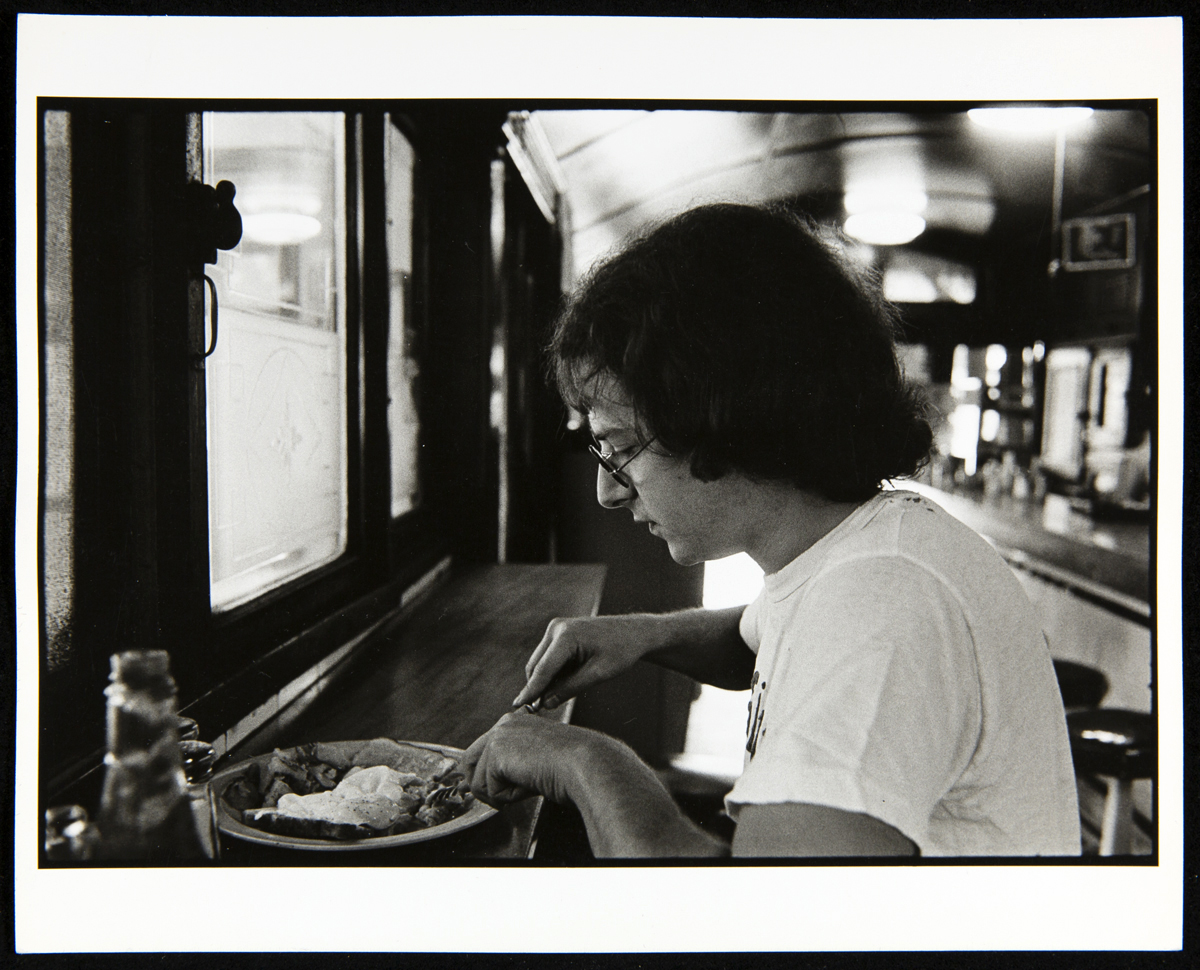
Photo by John Baeder
An authentic diner — a long, low structure built in a factory and hauled to a site equipped with cooking equipment, dishes and silverware — is a particular type of informal lunch counter restaurant, which in its heyday during the 20th century frequently appeared to be like an immobile railroad car, but a resemblance was the only connection to a train.
Continue ReadingHistory Outside the Box: Voices from the Past
History is often defined as a continuous, typically chronological record of important or public events or of a particular trend or institution. To this, Henry Ford would say “History is bunk.” Why would he say that? Because to him, history was more than stories or dates in books, famous pieces of artwork or even collections of the wealthy. History was much, much more. He felt, as many of us do today, that history is how people live and work every day and connect to the world around them, and that it can be kept in many different formats, from written to oral traditions.
With this mindset, Henry Ford sought a way to teach about everyday life. He did so by not only collecting the objects you can see in Henry Ford Museum of American Innovation or Greenfield Village but by setting out to collect memories. This was done by instructing museum assistants H.M Cordell and J.A. Humberstone to create a questionnaire. In 1929, this questionnaire would be sent to people who were 75 years or older, Ford being 65 years of age himself at the time.
Continue ReadingJapanese design was a major influence in the development of American modernism, often referenced as inspiration for architects like Frank Lloyd Wright, Walter Gropius and other early modernists. But it wasn’t just Japanese motifs that were influential. Many prominent Japanese American designers were active in the 20th century and were responsible for designing everything from the World Trade Center in New York City (Minoru Yamasaki) to the monitors kept in a child’s bedroom (Isamu Noguchi).
The following highlights a few of the Japanese American designers whose work is held in The Henry Ford’s collection.
Isamu Noguchi
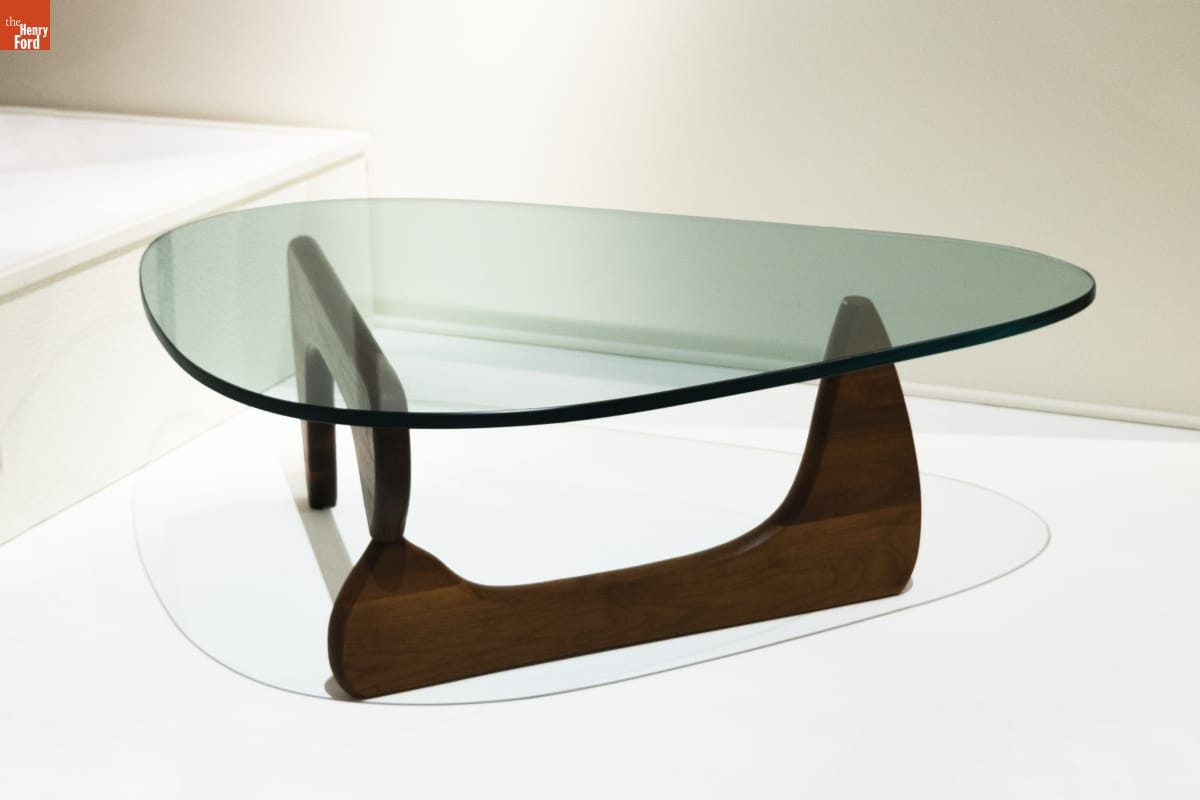
IN-50 table for Herman Miller, designed by Isamu Noguchi / THF186033
Continue ReadingTo celebrate the completion of another six months of work on our 2022-2024 IMLS Museums for America Collections Stewardship Program, the Conservation staff are showcasing some standout objects we have conserved. We are now in the second year of a two-year project to conserve, rehouse, relocate and create fully digital catalog records for 1,800 objects related to agriculture and the environment that have resided in the Collections Storage Building. Many of these objects will be used to support our Edible Education and Green Museum initiatives.

Stop by the back of the museum, near the steam engines, to peek through the Conservation lab windows and see what staff are conserving.

The first object is a declaratory or advertising artifact for Dr. W.E. Coomer Dog and Cat Hospital, circa 1920. Dr. Ward E. Coomer (1883-1963) was a veterinarian in Bay City, Michigan.
Continue Reading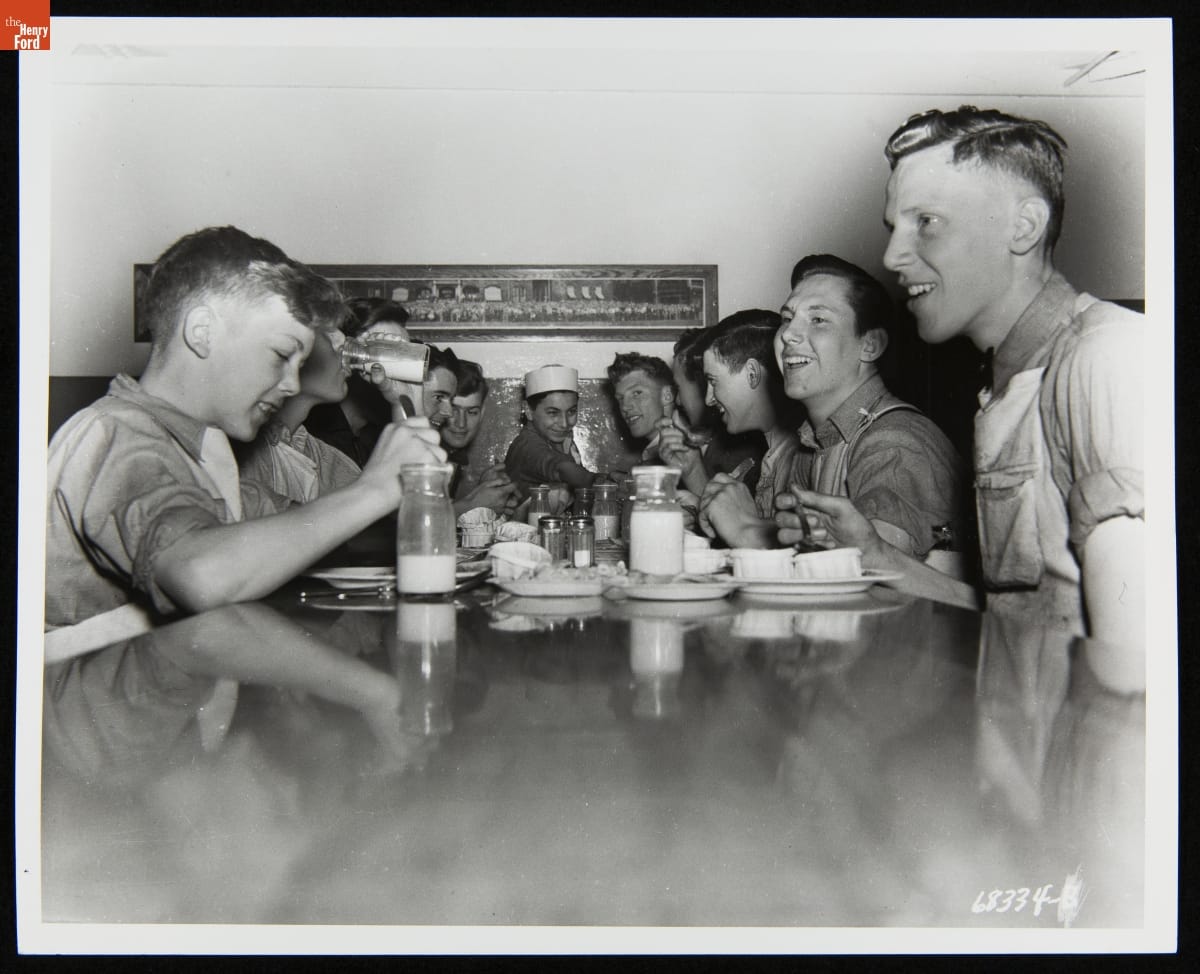
Henry Ford Trade School students eating lunch, May 24, 1937 / THF626068
Feeding students. It sounds like a one-way street. Food arrives. Cooks prepare it. Students consume it. But evidence in The Henry Ford collections confirms that students played an active role in growing food, planning menus and preparing lunches. They assumed the responsibility for feeding themselves.
The following overview of student-food interactions confirms the central role that school gardens played in educating students about food. The German province of Schleswig-Holstein engaged teachers and students in hands-on, garden-based agricultural education as early as 1814. The Swedish parliament called on teachers to establish and maintain gardens with their students in 1842.
Continue Reading
